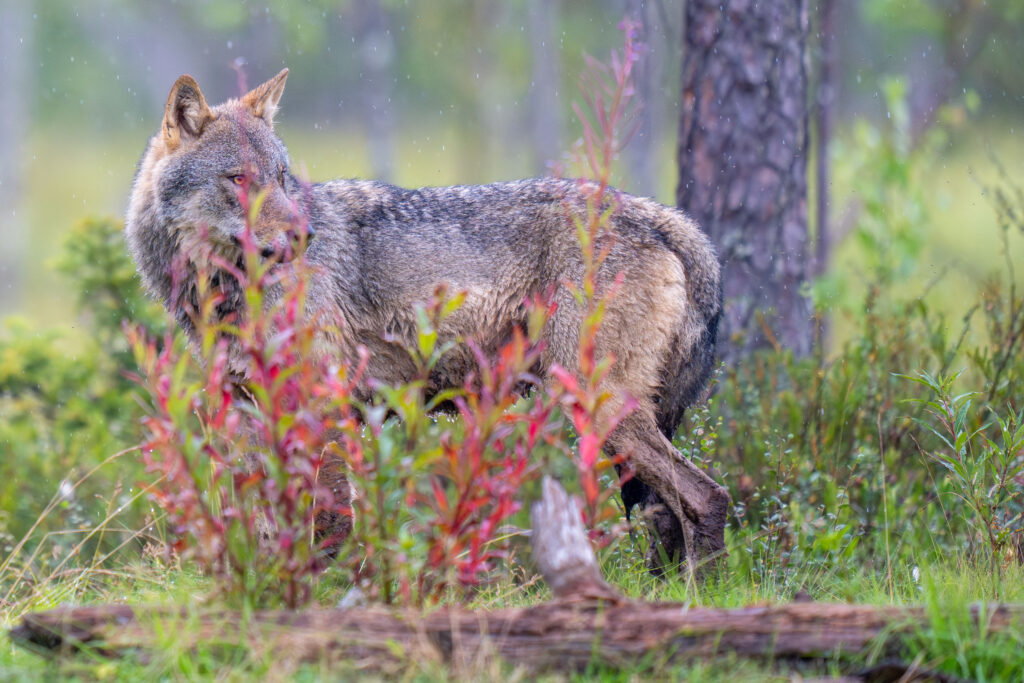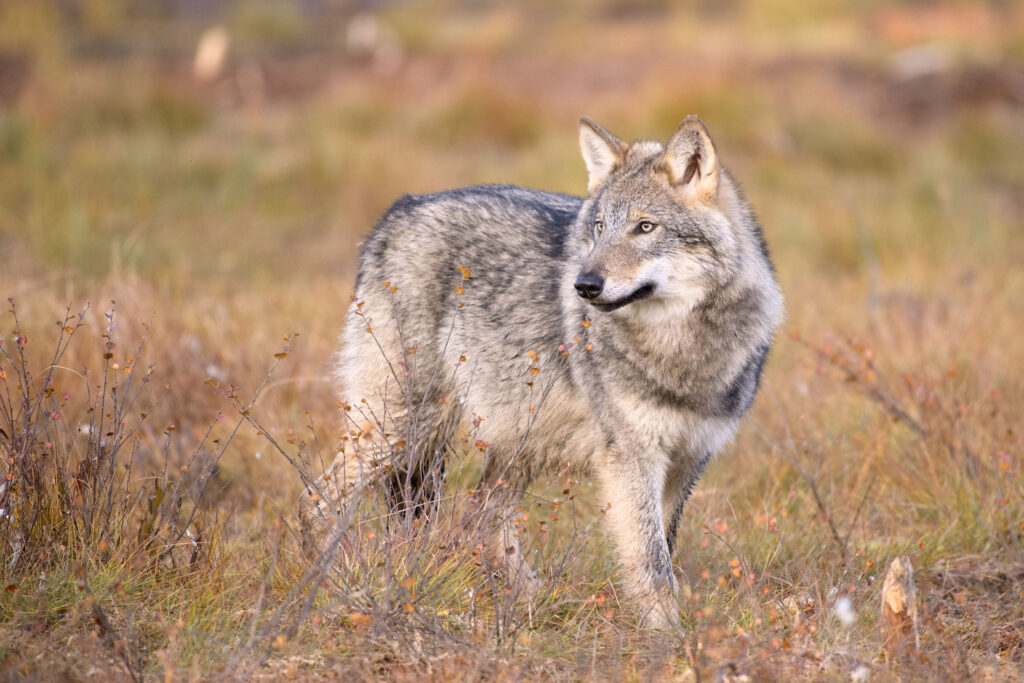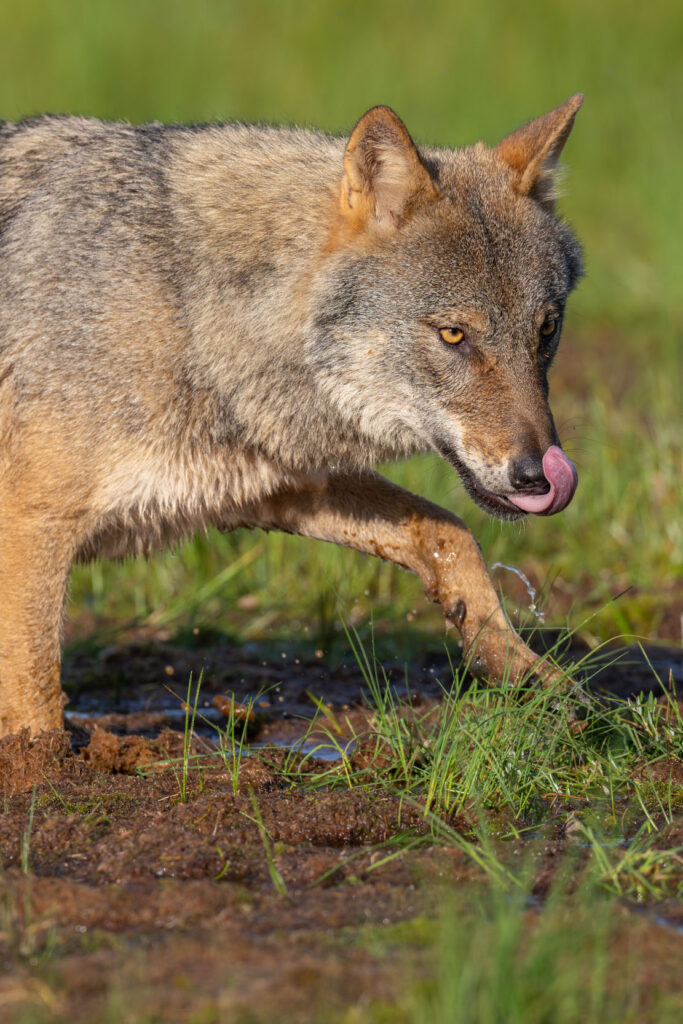BREAKING NEWS: For almost 20 years the wolf was exterminated in Sweden. In 1983 it walked back in, slowly increasing in numbers. Now Sweden’s government wants to rapidly halve the wolf population, from around 375 to some 170 individuals.
Sweden’s Minister of Rural Affairs, Peter Kullgren, has long been pushing for at least halving the Swedish wolf population. Kullgren indicates in an interview on June 20 in Swedish TV (SVT), that a by himself requested analysis of a disputed research report now provides scientific support for such a policy.

“Yes, it is possible to reduce the wolf population and it is also the government’s ambition that we do so”, says Peter Kullgren in the interview, emphasizing that “the government wishes for this to happen as soon as possible. Our ambition is to get as close to the lower number as possible”. Kullgren is also behind the government’s active lobbying toward the EU for a lowered protection status for all large carnivores.
In a press release June 20, the Swedish Environmental Protection Agency (Naturvårdsverket) states that their analysis of the report’s findings shows that, under certain conditions, it is possible to halve the current wolf population to 170 – 270 individuals, but that a number in the lower part of that range would mean a greater biological and legal risk-taking, compared to today.
The Environmental Protection Agency’s analysis, especially commissioned by the government, is based on a research report commissioned by the agency, presented in April 2024. Link to that report here.
This report states that there are several intractable criteria that first need to be met, in order for a reduction of the wolf population to 170-270 individuals to take place, without threatening the long-term survival of the wolf in Sweden, for example that:
- “On average 2 to 3 immigrant wolf individuals of eastern origin establish themselves in the population every ten-year period”. In practice, this has proven to be very difficult to achieve naturally. Very few wolves of Finnish-Russian origin tend to make it unharmed down to central or southern Sweden.
- “The birth and mortality rate in the wolf population does not deteriorate compared to today’s levels”. But today there is already a big question mark regarding the health status of Sweden’s male wolves, as the proportion of testicular defects has increased, which reduces reproductive capacity.
- “An increasing degree of more resource-demanding, individual-based wolf management would then need to be carried out, regarding genetic sampling and analysis as a basis for decisions, involving increased costs”.

Increased costs
If the wolf population is to be more than halved and reduced to a level of around 170 wolves, more individual-based monitoring is required, with more DNA analyzes, which also makes it even more complicated to grant licensed and protective hunting. Marking and relocation of genetically important wolves may also become a must. This again entails high costs and, in addition, previous attempts to relocate wolves have shown that this method is rarely effective. Relocated wolves often wander back anyway and there are few counties willing to accept to receive wolves that need to be relocated. In addition, there is an animal welfare aspect here that should not be ignored.
Increased legal risks
In addition to risking the wolf’s long-term survival in Sweden biologically, there are EU legal risks with such a sharp reduction of the wolf population. A negative population trend could threaten the wolf’s “Favorable conservation status”, according to the EU Habitats Directive, thus making it more difficult for management through hunting. It would also further confirm the violation case regarding licensed hunting, that the European Commission already has open against Sweden.
Protected species
The wolf is since long a “Strictly protected” species in the EU, which means that no population-regulating hunting is allowed. Sweden still does this annually, in breach of the rules in the EU Habitat Directive.
Important reference value coming up
A new reference value, i.e. an estimated minimum level for the wolf population in Sweden, is to be reported to the EU in 2025. This minimum number of wolves, judged to be able to “guarantee the wolf’s survival as a species in Sweden” will then form the base line for the country’s further wolf management for several years to come.
Links
